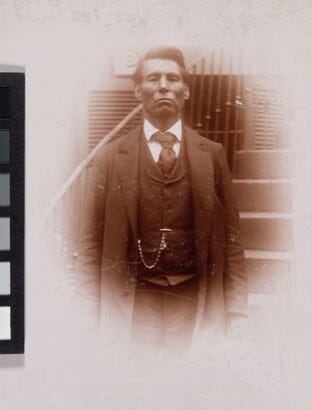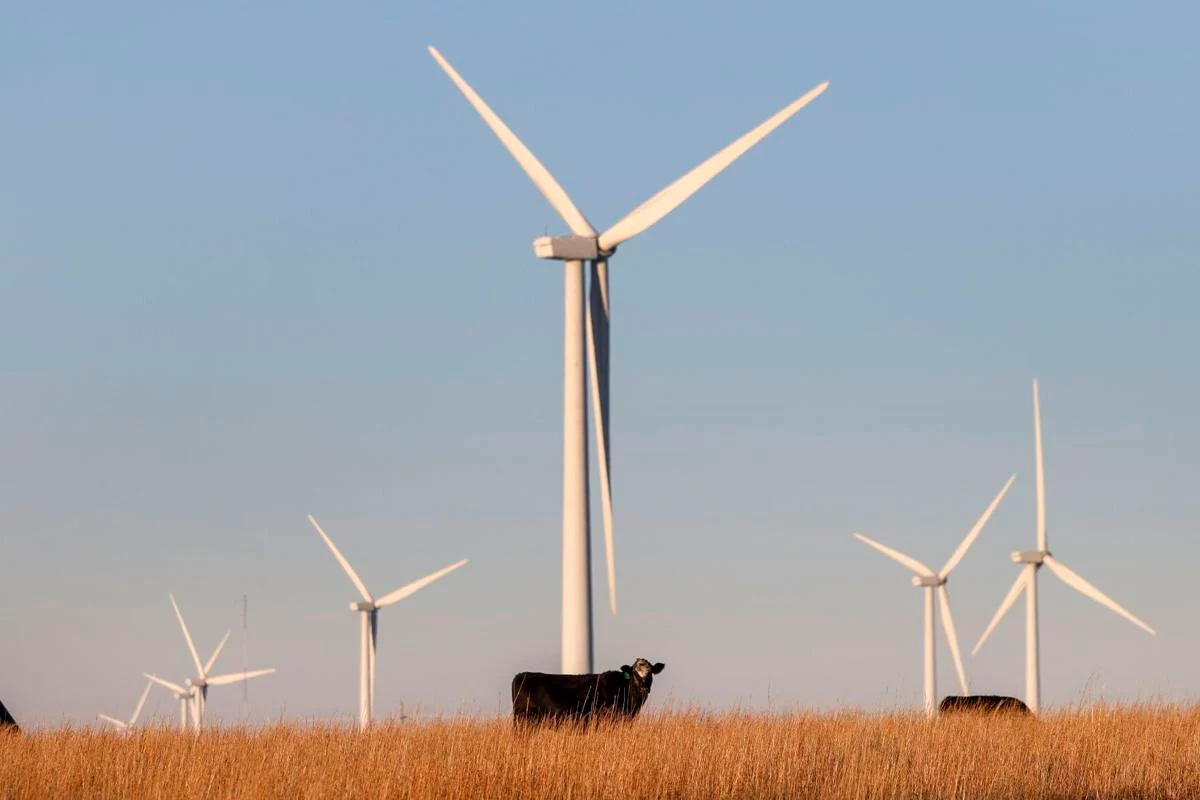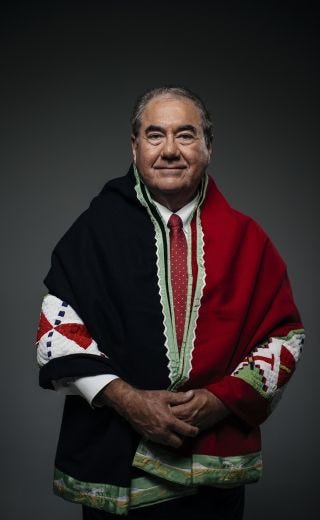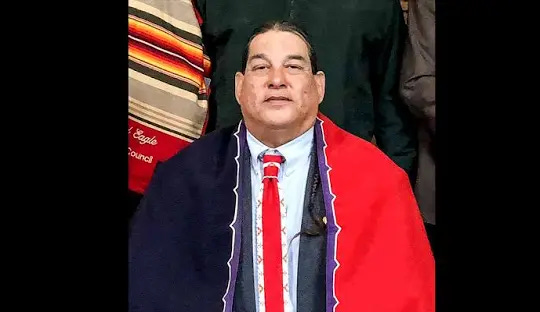At the end of my last post, I promised to give a concrete example of synergy between individual experiences of beauty and collective efforts for social justice—as part of a realization that the former doesn’t have to be an abdication of the latter, but that, on the contrary, the two can reinforce each other.
So here is one example: It comes from the Osage Nation in Oklahoma, whose long traditions and spiritual practices have institutionalized receptiveness to specifically beautiful parts of nature as a way for individuals to revitalize themselves as contributors to the collective well-being of their community.
This example shows an individual battling the injustices of the world while simultaneously deferring to beauty in the world.
I am not suggesting that non-Osage people appropriate Osage practices, but rather that we learn from what’s effective within one tradition to find the common elements that may be effective within other traditions or within individuals’ varied personal experiences—so that we may all be more vibrantly consistent in standing for social justice.
For traditional Osage, eagles connect reverent individuals with revitalizing power.
“My elders once told me to look at an eagle wing like the Catholics do a crucifix,” says Geoffrey M. Standing Bear, Principal Chief of the Osage Nation.
“The eagle flies above us and has been here longer than we have and knows God better than we do. It has holy powers that we can draw from,” Chief Standing Bear told the Smithsonian.1
At its root, “holy” is connected in its meanings to “healthy” and “whole”—”holy power” connoting “healing power” and “wholeness power.” According to Osage practice, kinship ties with all creation can be channels through which humans can receive healing energy and the power of completion—of their identities as individuals embedded in creation. Tink Tinker, a professor at the Iliff School of Theology in Denver and an enrolled member of the Osage Nation, explains: “We believe that all of our relatives have distinct energy or power attached to them.” Describing Osage ceremonies, Tinker says, “Eagles are our closest relatives. We use [them] for [their] powers to help with healing and to give people strength, courage, wisdom and generosity.” Tinker stresses the importance of eagles as a real part of actual creation. “Eagles are not just symbols,” he says. “They have actual power….intrinsic energy….”2
But what does this traditional practice have to do with resistance to injustice?
The Osage Nation has been engaged in non-stop struggles against injustice for almost two centuries.
The murders and thefts of the 1920s, known in the Osage Nation as the “Reign of Terror,” loom large in Killers of the Flower Moon, a recent book by David Grann and film by Martin Scorsese.
But the crimes depicted there are only part of a long line of efforts by non-indigenous schemers to cheat the Osage out of their land and mineral wealth. These efforts stretch from settler encroachment in the 1800s (including by Laura Ingalls’ family, who illegally built their “little house on the prairie” on Osage land) to a Spanish energy company’s actions today to operate an industrial wind facility in violation of Osage sovereignty.*
The Osage Minerals Council, now headed by Chairman Everett Waller, has led the battle against Enel, the Spanish energy company, and its off-shoots (Enel Kansas, LLC, Enel Green Power North America, Inc., and Osage Wind, LLC) for the last 14 years.*
The Osage have recently won a landmark victory, with a judge ordering the developers to take down the “trespassing” turbines and compensate the Osage for damages still to be determined at a future hearing.
This stunning victory should not obscure the difficulty in achieving it.
It took extraordinary persistence for the Osage to fight for justice, year after year, in the face of difficulties, setbacks, and defeats.
To highlight this point, let me summarize just a few of the steps along the way:
In 2010, the wind developers* leased some 8400 acres of private land, ignoring the fact that below the surface of those acres lies the “Osage Mineral Estate.” How did this estate come about? When the government imposed privatization of Osage land through the Osage Act of 1906, the Osage retained collective ownership of the belowground minerals (the Osage Mineral Estate)—thanks to the vision and diplomatic skills of Principal Chief James Bigheart and others.

Over a century after the passage of the Osage Act of 1906, the Osage warned the wind developers that they needed more than surface rights to the leased land—they also needed permits from the Osage Minerals Council and the Department of the Interior.
The developers spurned the warning and proceeded to erect 84 giant turbines.

In 2011, the Osage brought suit, arguing that the turbines blocked access to the Osage Mineral Estate.
In 2013, the Osage lost that lawsuit, due to a ruling that the turbines were not blocking every point of access to the minerals underground.
But the Osage were using their powers of observation.
The turbines required cement bases to be set in underground pits, 60 feet in diameter, each requiring the removal of 20,000-30,000 cubic feet of dirt and rock. The developer was excavating the pits and then crushing some of the rock to use as fill.
The Osage documented these procedures.
In 2013 the Osage asked the federal government, as Trustee of the Osage Mineral Estate, to bring suit on new grounds--that the developer was illegally mining the Osage Mineral Estate.
The Obama administration agreed and brought the suit. In 2015, a district court found against the Osage, ruling that the underground disturbance was only “incidental” to a larger surface project and was therefore not, legally speaking, “mining.”
In addition to this legal defeat, the Osage suffered a greater setback when the Obama administration declined to appeal and did not inform the Osage of their decision until the last day on which an appeal could be filed.
The Osage Minerals Council leapt into the breach. They filed an appeal, but first they had to file an emergency motion—that they be allowed to advocate on their own behalf.
Would the Osage Minerals Council be allowed to “intervene” at the appellate level? After all, it was the U.S. government and not the Osage Minerals Council that was the “named party” in the original suit.
In 2018, the U.S. Court of Appeals affirmed the Osage Minerals Council’s right to “intervene” and to appeal the adverse ruling.
But then, in 2019, the developers asked the U.S. Supreme Court to revoke the Osage Minerals Council’s status. The Trump administration filed a brief in support of the Osage, and the Court declined to hear the case.
Thus, the right of the Osage to appeal was left intact. The Osage filed their appeal.3
Four years later, in December 2023, U.S. District Judge Jennifer Choe-Graves found for the Osage. She said that the turbines constituted on-going “trespass”; that they had to be removed; and that the Osage were also due damages in an amount to be determined at a future hearing.4
Today the legal battles continue as the Osage try to get Enel et al. to open up their books. As the Osage prepare for the hearing on compensatory damages, they want to know how much money the developers made during the years of illegal practice—in addition to the $10 million in subsidies the developers are known to have taken in annually. “What is the value of intruding onto our sovereign property, that we’ve kept, and fought for, and kept all these many years?” asked Chief Standing Bear in a recent TV interview. The violation was of something existential and therefore priceless, something not easily translatable into monetary terms.
And what can compensate for the drain of energy? “We’re tired of this,” Chief Standing Bear said. “We’ve been tired of this—My father’s generation was tired of this, my grandparents, my great-grandparents.”5
Everett Waller, Chair of the Osage Minerals Council, also called the current lengthy struggle “grueling.” He told interviewer Robert Bryce, that the developers “knew we were a small nation, with limited resources. They tried to bleed us to death.”
And indeed, the Osage “bled.” “In this battle every warrior gets damaged,” Waller said.
The Osage are not considering relaxing their vigilant advocacy. “We’re going to keep pushing,” Chief Standing Bear said. “This is how you do it. You can’t just sit there and gripe about it. You’ve got to stand up. And that’s what our Minerals Council did.”
But how does one maintain the energy for vigorous advocacy in the face of a struggle that is “tiring” and “grueling” and “damaging?”
This is the question that interviewer Robert Bryce asked Everett Waller, Chairman of the Osage Minerals Council. “What gives you hope?” Bryce asked.
Waller replied by referencing his loved ones, his spirituality, and—eagles.
“I go to my loved ones and have moments with them in prayer,” he said. Prayer, in his experience, ascends and descends. “I had two eagles show up yesterday, here at the house, which is a great sign, that the Lord’s in command.”
“Tell me about the eagles,” said Bryce, himself a lifelong birdwatcher.
Waller recounted: “It was a wonderful moment. We had them fly up here in the yard…I was so surprised. You can see them fly over, but to be sitting here, and then they start screeching, because they’re a pair, and they mate for life, and I felt like that’s my Osages, just like those eagles.”
“We hold [eagles] in the highest esteem,” he added. “That’s the bird that can fly up to the right hand side of God, get His blessings, and fly back down to us.”
About the eagles landing on his lawn, Waller told Bryce, “I looked for blessings from the Creator, and I definitely got one.”6
What could that “blessing” be? A feeling of well-being, certainly, and amazement at receiving such a gift for oneself from outside oneself. This well-being would be a healing of the wounds from the struggle and a replenishment of one’s inner resources through kinship surpassing individuality. It would be visceral awareness—both humbling and confidence-building—that beauty/rightness are a force in the world —”that the Lord’s in command.”
What can we non-Osage who also yearn for beauty/rightness learn from Waller’s experiences?
No doubt immersion in traditional Osage spirituality helped Waller feel “blessed” by his encounter with two eagles.
But are there elements in his experiences that are common to experiences within other traditions and individualized frameworks, secular as well as religious? If so, perhaps we too can learn to receive "blessings” in the midst of struggles for social justice that are “tiring,” “grueling,” and even “damaging.”
In the next post, I want to search out and explore those commonalities.
*My own criticisms of industrial wind energy are well known, as in here and here. They stem from its problematic resource- and land-intensive physical characteristics; its damaging effects on ecology, community, and grid reliability; its perversion of the search for genuine solutions to global warming; and its lack of effects on CO2 concentrations in the atmosphere. However, this post is not an extension of those particular criticisms, and I do not yet know whether or not individual Osage share any or all of them. Rather, this post focuses on the Osage perspective in their legal battles. Their courtroom advocacy is focused on Osage sovereignty and thus the integrity and ongoing vitality of the Osage Nation.
Geoffrey M. Standing Bear, quoted by Jennifer Nalewicki in “Inside a Remarkable Repository that Supplies Eagle Parts to Native Americans and Scientists.” Smithsonian Magazine, September 6, 2016. https://www.smithsonianmag.com/science-nature/national-eagle-repository-eagles-go-to-native-american-tribes-and-science-180960306/ Retrieved September 2, 2024.
Tink Tinker, quoted by Jennifer Nalewicki in Ibid.
An excellent summary of the legal back and forth up to this point can be found in William R. Norman and Zachary T. Stuart’s “United States v. Osage Wind: An Example of How an Indian Tribe's Unique Status Governs Appeal Rights and Statutory Construction.” Oklahoma Bar Journal. Oklahoma Bar Association: 2019. https://www.okbar.org/barjournal/nov2019/obj9009normanstuart/ Retrieved September 2, 2024.
Judge Choe-Graves’ ruling can be found in its entirety at “UNITED STATES OF AMERICA, Plaintiff and OSAGE MINERALS COUNCIL, Plaintiff-Intervenor v. OSAGE WIND, LLC, ENEL KANSAS, LLC, and ENEL GREEN POWER NORTH AMERICA, INC., Defendants.” Case 4:14-cv-00704-JCG-JFJ Document 386 Filed in USDC ND/OK on 12/20/23. https://turtletalk.blog/wp-content/uploads/2023/12/386-dct-order.pdf. Retrieved September 2, 2024.
Principal Chief Geoffrey Standing Bear in an interview on News on 6/KOTV, Jan. 16, 2024. YouTube: “‘We’re Tired of This’: Osage Chief Welcomes Wind Farm Court Ruling.” Retrieved September 3, 2023.
Everett Waller, Chair of the Osage Minerals Council, interviewed by Robert Bryce on “The Power Hungry Podcast.” January 2, 2024. Retrieved September 3, 2024. YouTube:
https://www.google.com/search?q=power+hungry+podcast+everett+waller&rlz=1C1EODB_enUS546US547&oq=power+hungry+podcast+everett+waller&gs_lcrp=EgZjaHJvbWUyBggAEEUYOTIHCAEQIRigATIHCAIQIRigATIHCAMQIRigATIHCAQQIRigATIHCAUQIRigAdIBCDkxOTBqMGo3qAIAsAIA&sourceid=chrome&ie=UTF-8#fpstate=ive&vld=cid:51641167,vid:NvhMcgoWtDk,st:0






